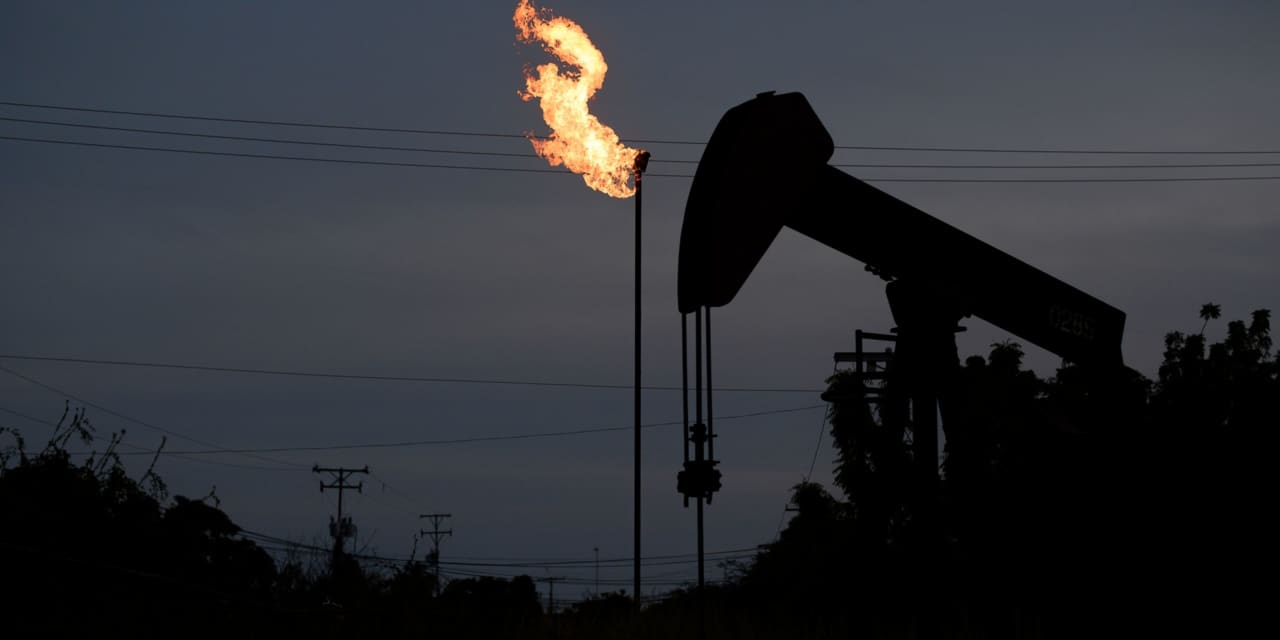Oil prices fell sharply on news that OPEC’s Sunday meeting will be delayed.
Gaby Oraa/Bloomberg
A unified OPEC has held oil prices aloft for most of the past two years. Signs of disunity before its next meeting, however, are causing prices to fall and could weaken the cartel’s influence heading into 2024.
OPEC and its allies like Russia, a group known as OPEC+, delayed a meeting that was expected to be held on Sunday by four days because of disagreements among members about future production cuts, according to media reports.
Oil prices fell sharply on the news.
Brent crude,
the international benchmark, fell 4.3% to $78.92 per barrel on Wednesday.
West Texas Intermediate,
the U.S. benchmark, fell 4.5% to $74.30 per barrel. WTI is down more than 20% from the highs it hit in September.
OPEC has delayed meetings before, but never for as long as four days, according to Rystad Energy. The long delay means “reaching a new agreement to cut production will prove to be challenging,” wrote Rystad Vice President Jorge León.
OPEC+ has reduced its production by about 2 million barrels a day to keep oil prices high, with some members reducing production by an additional 1.7 million barrels, and Saudi Arabia and Russia cutting 1.3 million barrels combined on top of that. All told, the cuts amount to about 5 million barrels a day, a significant portion of the 101 million barrels of oil that the world consumes. At least 3.6 million barrels of that is expected to stay off the market in 2024, though the Saudi and Russian cuts have not yet been extended.
Growth in oil production outside of OPEC—including in the U.S., Venezuela, and Brazil—has made up for much of those cuts. Relatively weak demand in China and elsewhere has further hurt oil prices.
Analysts have been betting that OPEC would respond to recent price weakness by extending the current cuts, or possibly even pushing for more cuts from OPEC members. Whatever strategy the countries are seeking appears to have become contentious.
Among the tricky topics under discussion is whether some countries’ quotas should change based on their current production levels. “Every member country acknowledges the need to reduce output to support prices into 2024,” Rystad’s León wrote. “The question is how to share the burden of this.”
León says he expects some sort of deal to cut production will emerge, although the number of possible scenarios has increased. Natasha Kaneva, head of the global commodities strategy team at J.P. Morgan, wrote in a Wednesday note that Saudi Arabia and Russia are likely to extend their cuts through the first quarter of 2024 but could instead choose to bring back more production. That might hurt oil prices in the near term, but it could convince U.S. drillers to lower production and eventually cause prices to spring back. “This scenario opens up a path for a significantly more bullish price outcome in 2026-2027,” she wrote.
For oil stocks, the messy OPEC meeting is a bad sign. The
SPDR S&P Oil & Gas Exploration & Production exchange-traded fund
(ticker: XOP) was down 0.6% on Wednesday and is off 6.9% in the past month.
Even if OPEC ends up cutting production and boosting prices, repeated production cuts are a bad sign for demand. Oil stocks tend to trade based on what oil prices would be if supply cuts went away. (It’s risky to buy an asset whose price could change based on a cartel’s supply decision.)
“Equity market multiples don’t like evidence of a ‘less than’ invisible hand or signs of supply constraint to support price, and multiples normally fall in concert,” wrote Evercore analyst Stephen Richardson.
Write to Avi Salzman at [email protected]
Read the full article here










